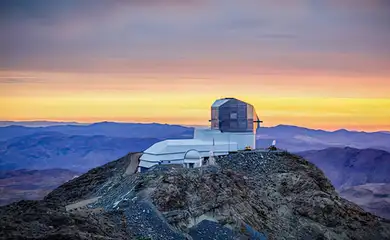Brazilians join unprecedented project to map Southern Hemisphere sky

In less than a month, an unprecedented astronomy project will begin mapping the Southern Hemisphere sky from millions of high-definition photos taken by a state-of-the-art telescope. Around 170 Brazilian scientists will take part in the US-led project, which should last over 10 years.. The equipment is capable of generating more than 200 thousand images a year, allowing billions of celestial objects to be viewed and cataloged.

The amount of data is huge, and that is where Brazil’s contribution comes in. The Inter-institutional e-Astronomy Laboratory (LIneA) will be responsible for processing, analyzing, and distributing a significant part of these data, storing at least five petabytes of information (one petabyte is equivalent to more than 1 million gigabites).
To do this, the laboratory is completing its Independent Data Access Center, on the premises of the National Laboratory for Scientific Computing, which operates the largest public supercomputer in Brazil, in Petrópolis, in the mountainous region of Rio de Janeiro.
According to LIneA Coordinator Luiz Nicolaci da Costa, the analysis should begin in 2026, but the laboratory still needs resources to conclude its facilities and guarantee the project’s sustainability.
“We have a total of 170 Brazilian researchers involved—80 percent of whom are students or post-docs. In other words, it’s a project for the future—today’s students will be tomorrow’s lead researchers. The project is comprehensive in its objectives, so it is divided into themes. The students can work on those themes alongside the greatest scientific leaders from all over the world, on equal footing,” he stated.
Nicolaci also highlights Brazil’s strategic role in an initiative of this size. “A total of 1,500 researchers come from 48 international institutions, so you have this network of science centers with technological exchange keeping you up to date. And all the mechanical engineering, optical engineering, electronic engineering, and data science involved shows that, although the final application may be somewhat abstract, what you create in terms of training personnel in this project is incomparable,” he pointed out.
As far as astronomy is concerned, the mapping should bring strides in research into dark energy, which makes up most of the universe, and little-studied celestial bodies. Approximately 17 billion stars and 20 billion galaxies are expected to be cataloged, as well as objects that are difficult to observe with less powerful instruments.



